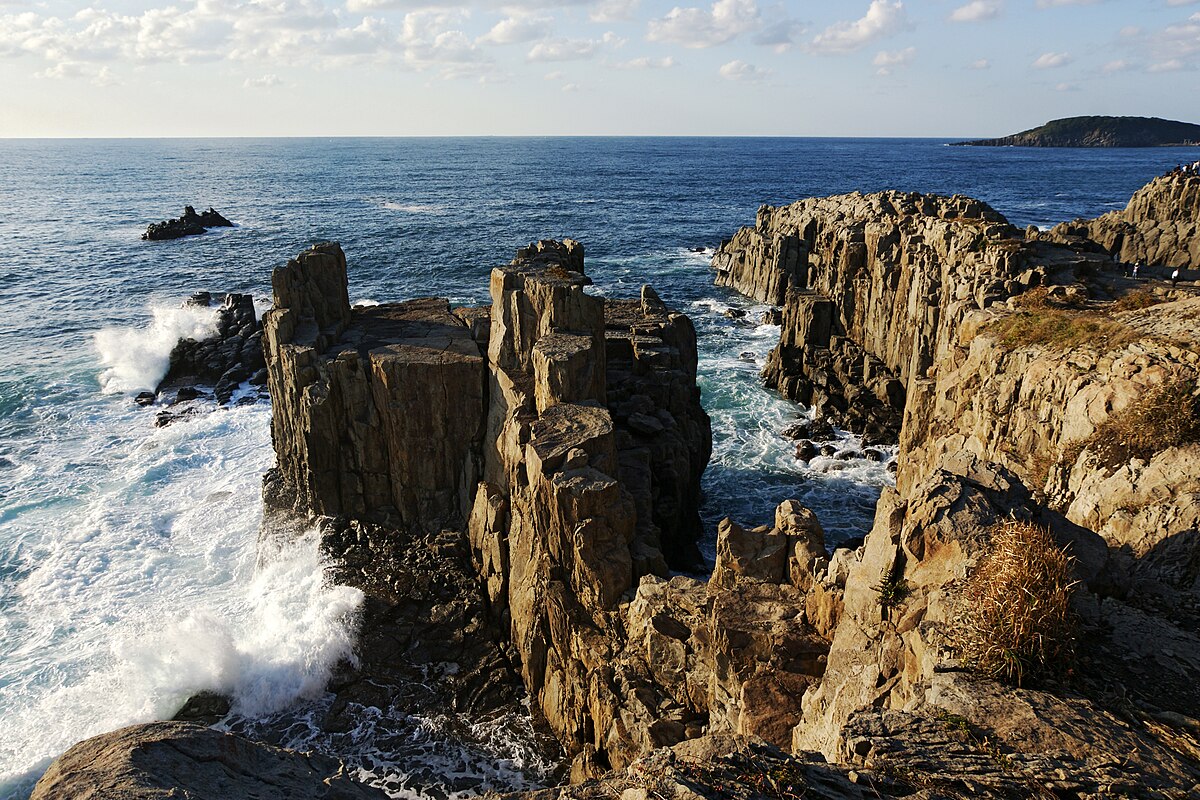Overview (history, characteristics, attractions)
Tojinbo is a scenic spot of sheer cliffs facing the Sea of Japan in Mikuni-cho, Sakai City, Fukui Prefecture. It is characterized by a unique landscape of columnar joints (rocks split into columns), and the contrast between the rough waves and the sheer rock faces creates a magnificent view of the Sea of Japan. Geologically, it is believed that the rock faces were formed when lava and sediments flowing from volcanic activity cooled and solidified, and that erosion over many years has given them their current shape.
According to legend, the name comes from Tojinbo, a monk from Echizen, and it is a popular tourist destination throughout the year. The sunsets on clear days and the spectacular waves on stormy days are especially popular photo spots for tourists.
Highlights
- Columnar jointed cliffs: The unique patterns of vertical cracks in the rocks create a spectacular sight. There are places where you can observe them up close.
- Sightseeing boats: Sightseeing boats are operated that allow you to get a close-up look at the cliffs from the sea side. Tojinbo is a sight that is different from the view from land (services may be suspended depending on the season and sea conditions).
- Sunsets and clear skies: The sunset over the Sea of Japan is a famous sight. On clear days and in the clear air of autumn and winter, you can see the distant scenery clearly.
- Walking paths and observation decks: There are walking paths and observation spaces where you can safely enjoy the scenery, and there are also many photo spots scattered around.
- Seafood and souvenirs: There are many restaurants and souvenir shops serving local seafood, and you can enjoy seasonal delicacies such as Echizen crab (in winter).
Access (nearest station, transportation, etc.)
- Train + Bus/Taxi: The nearest public transportation is Mikuniminato Station on the Echizen Railway or JR Fukui Station. From Mikuniminato Station, you can access the area by bus or taxi. From Fukui Station, take the bus (bound for Awara/Mikuni) for approximately 40-60 minutes (travel time varies depending on the bus).
- By car: Take the Hokuriku Expressway (or other public roads) and exit at Maruoka IC or Kanazu IC on the Hokuriku Expressway via national and prefectural roads for approximately 30-50 minutes (depending on your starting point). Parking is available (both paid and free), but it can get crowded during peak seasons, so we recommend arriving early.
- By sightseeing boat: Many sightseeing boats depart from Mikuni Port, and operating hours and days off change depending on the season and weather, so it is recommended to check in advance.
Estimated stay (estimated time required)
- Short visit: 30 minutes to 1 hour (just walking around the cliffs and taking photos)
- Leisurely sightseeing: 1.5 to 3 hours (including a stroll around the observation deck, lunch, souvenirs, and a stroll around the surrounding area)
- If you include the sightseeing boat: Add the time for the boat ride (approximately 20-40 minutes) and plan for around 2 hours.
Nearby spots
- Mikuni Onsen/Mikuni Port Area: Enjoy a stroll around the port town and seafood cuisine.
- Awara Onsen: About 30 minutes by car. Convenient for staying overnight and relaxing in the hot springs.
- Maruoka Castle (Sakai City): A castle famous for its surviving castle tower. Approximately 30-40 minutes by car.
- Eiheiji (Eiheijicho): The head temple of the Soto sect. A historic temple, about 40-60 minutes by car.
- Fukui Prefectural Dinosaur Museum (Katsuyama City): A large museum popular with families with children, it's about a 1-1.5 hour drive away (a long drive).
Things to be aware of (crowds, manners, seasonal precautions, etc.)
- Safety first: There are some areas near the cliffs where the footing is poor and there are no fences. Please be careful not to cross the fences, walk carefully to avoid the risk of falling, and always keep an eye on children.
- Changes in sea conditions: The weather and sea conditions in the Sea of Japan are prone to sudden changes, and high waves and strong winds can be dangerous. Cruises may be canceled depending on the weather.
- Crowds: Parking lots and walking trails tend to be crowded during the spring and summer tourist seasons, especially on long holidays and weekends, and during the autumn tourist season. Please allow yourself plenty of time, or consider visiting early in the morning or in the evening.
- Seasonal clothing: In winter, strong northwesterly winds and cold temperatures are common along the Sea of Japan coast, so you'll need to take measures to protect yourself from the cold. Even in summer, the sea breeze can make you feel chilly.
- Nature conservation and etiquette: Please observe basic tourist etiquette, such as taking your trash with you, not damaging plants or rocks, and following local rules.
- Serious consultations and emergency response: Tojinbo has been reported as a popular suicide spot. If you witness dangerous behavior or if there is an emergency situation, do not hesitate to contact the fire department or emergency services (119) or the police (110).
Tojinbo is a tourist destination known for its rugged and beautiful natural scenery. Please enjoy the dynamic scenery of the sea and rocks while taking safety precautions.



